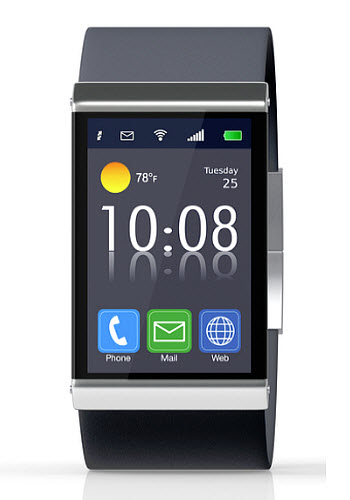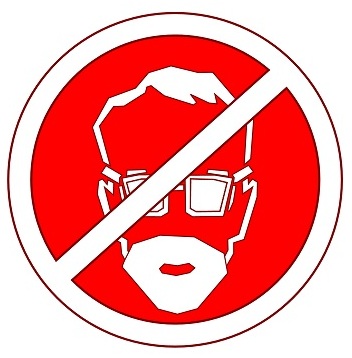Although the device has never been officially acknowledged by the company, deals make its existence obvious.
Although the iWatch name is nothing more than a term that has been applied to a smartwatch device that is only rumored to be in development at Apple, it is becoming ever clearer that this wearable technology does exist, simply through the deals that the manufacturer has been seeking.
Many rumors about the types of expert that Apple has been seeking are adding weight to the rumors of a smartwatch.
Following rumors that Apple has been seeking fitness experts to assist in the development of potential health software for wearable technology, there have also been other reports that have suggested that the company is looking into solar power battery charging for a device that is somewhat like a watch. Now, there are more iWatch rumor reports as Apple seeks designers at luxury wristwatch companies.
All of these details continue to make it more clear that the iWatch is far more than just a rumor.
At the same time, many of those luxury watchmakers are not entirely impressed with the current look of wearables and the future that they imply. Nick Hayek, the CEO of Swatch has said that he feels that there will be a considerable limitation in the smartwatch marketplace due to tech restrictions.
He explained that “We have been in discussions – not ever initiated by us- with practically all players in smart wearables up until today,” but also added that “we see no reason why we should enter into any partnership agreement.”
There have been recent news reports from many reputable publications that have indicated that Apple is seeking the very best in the designer and wristwatch industry. While they have attempted to “lure” Hublot and “several Swiss parts manufacturers,” said the Financial Times, Jean-Claude Biver, the watch and jewelry chief of Luis Vuitton Moet Hennessy, said that nobody has taken the offer.
The iWatch will be a late entrant into this rapidly moving wearable technology race, in which the smartwatch remains king, so far. In order to stand out and be worth its price tag, it will need to be quite the exceptional device.
Legal issues concerning the use of wearable devices attracts notice in Australia
As wearable technology gains more attention, the possible legal issues concerning the use of wearable devices is also attracting more attention from lawmakers in several countries. The Australian Law Reform Commission has begun discussion on how wearable devices could be used for illegal purposes. Google Glass, for instance, could be used to record video and audio without appropriate consent from the subject being recorded. The legal issues that wearable technology has unearthed could prevent the use of devices like Glass in the future.
Organization releases recommendations concerning the legal issues associated with wearable devices
The Australian Law Reform Commission has recommended 47 legislative changes concerning privacy and the use of wearable technology. The organization has suggested that legislation concerning the use of wearable devices to invade someone else’s privacy. Such a legislation would mark the first time the Australian government has taken steps to legally defend the privacy of a single person. The organization is also suggesting the privacy laws be drafted based on those that already exist concerning government surveillance.
Glass has come under fire in the US and elsewhere
 Google Glass has been the subject of legal debates throughout the world, but these debates are not always focused on the possibility of invasion of privacy. In some states in the U.S., the use of Glass has already been prohibited amongst drivers. The reasoning behind this ban has to do primarily with the possibility of the device distracting drivers in the same way that other mobile devices do. Glass is not the only wearable device that has come under fire, of course, but it has become the most popular device to receive legal attention.
Google Glass has been the subject of legal debates throughout the world, but these debates are not always focused on the possibility of invasion of privacy. In some states in the U.S., the use of Glass has already been prohibited amongst drivers. The reasoning behind this ban has to do primarily with the possibility of the device distracting drivers in the same way that other mobile devices do. Glass is not the only wearable device that has come under fire, of course, but it has become the most popular device to receive legal attention.
Legal issues could limit the use of Glass and similar devices
Devices like Glass can easily be used to record conversations and video without consent. These devices can also be used to find out sensitive information about a particular person using facial recognition technology and similar features. Because these devices could be used for potentially malicious purposes, the legal issues concerning the use of these devices in public are beginning to receive more attention.


 Google Glass has been the subject of legal debates throughout the world, but these debates are not always focused on the possibility of invasion of privacy. In some states in the U.S., the use of Glass has already been prohibited amongst drivers. The reasoning behind this ban has to do primarily with the possibility of the device distracting drivers in the same way that other mobile devices do. Glass is not the only wearable device that has come under fire, of course, but it has become the most popular device to receive legal attention.
Google Glass has been the subject of legal debates throughout the world, but these debates are not always focused on the possibility of invasion of privacy. In some states in the U.S., the use of Glass has already been prohibited amongst drivers. The reasoning behind this ban has to do primarily with the possibility of the device distracting drivers in the same way that other mobile devices do. Glass is not the only wearable device that has come under fire, of course, but it has become the most popular device to receive legal attention.